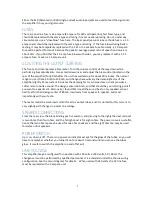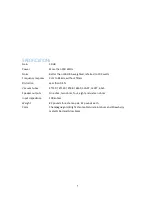
4
TUBE TESTER
The front panel meter may be used to test the tubes. Remove all the power output tubes; plug the
amp into the AC wall socket with the main rear panel power switch OFF.
Insert the tube you wish to test into socket #6 (the far right front socket). Turn the bias control
such that the slot is at 12:00 o’clock (straight up and down) and turn the main power switch ON.
With a watch, time the warm-up period for exactly one and a half minutes and note the current
reading. Turn the amplifier OFF,
Remove the tube and insert the next one. You can hold the tube with your bare fingers - it will not
be too hot after only a minute and a half, provided it was cool to start with. Keep track of each
reading, and repeat until all tubes have been checked. If any single tube does not bias up or “runs
away” with its current climbing substantially higher, ≈200% than the others, then it must be
replaced. It is okay to turn the amp on and off at will. Return the bias control to its original
position and put all the tubes back into their sockets. This completes the tube testing operation.
MATCHING OUTPUT TUBES
Matching output tubes is not necessary, thanks to the DC restorer. But it’s fun to do anyway. As
noted above, as you wrote down each bias current, you will end up with six numbers. The goal is
to select two groups of three whose sum (from any three tubes) is as close as you can get to the
other group of three tubes. Install the first group in sockets #1, #3, and #5, the odd sockets. Then
install the other group into sockets #2, #4, and #6, the even sockets. The socket positions on the
amp, from left to right, looking from the front are: #1, #2, #3, and #4. The last two positions, #5
and #6, are the front tubes on the right.
The new KT120’s are quite variable, and I recommend that when using the KT120 tube, one should
go through the exercise of matching them as outlined above.
SMALL TOGGLE SWITCH
There is a small toggle switch on the top front, and it controls the feedback as mentioned earlier.
Thrown left = classical, right = contemporary.
NEW AMPLIFIER SMELL
Like a brand new car, this amplifier possesses a "new amplifier smell," even though it has been
built from both new and vintage parts. When powered up for the first time, the fresh paint and
recent skin oils on the tubes will create a new, hot amp smell. I find it sort of pleasant, but you
may not. It will dissipate with use, usually requiring about four weeks of normal operation.






